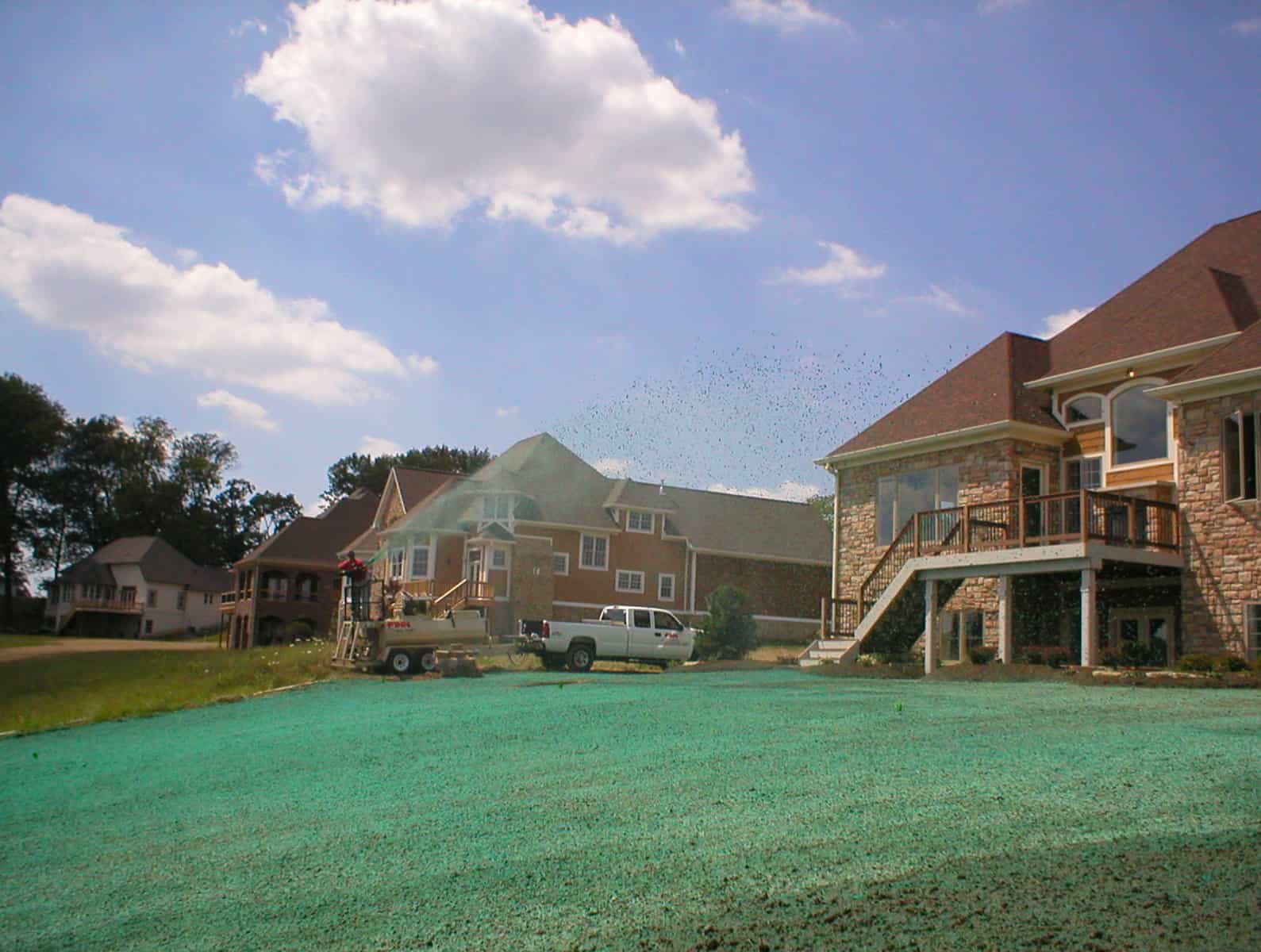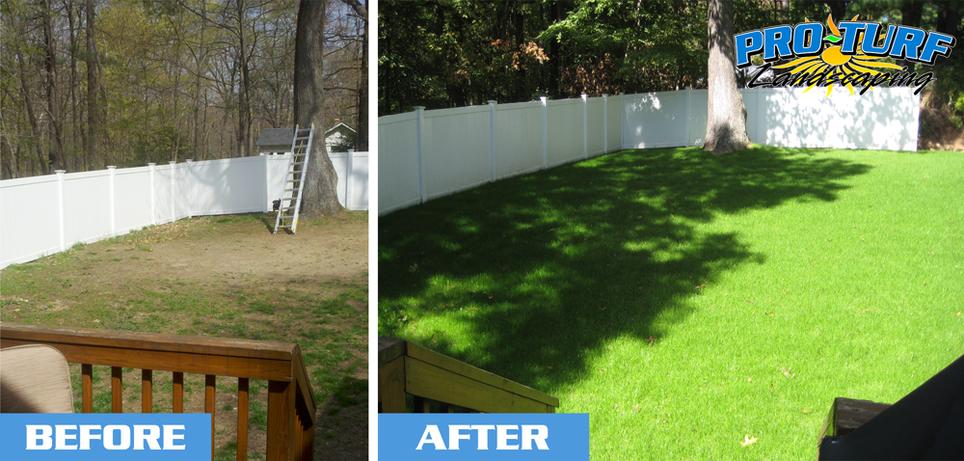To care for a hydroseeded lawn, water it regularly and avoid mowing until it reaches at least 3 inches in height. A hydroseeded lawn requires proper care to establish healthy growth and maintain its lush appearance.
By following a few essential guidelines, you can ensure its successful development. Regular watering is crucial for the initial stages, as hydroseeded lawns require consistent moisture to promote germination and establish strong root systems. Be mindful not to mow the lawn until it has reached a height of at least 3 inches, allowing sufficient time for the grass to establish itself.
This prevents any damage to the delicate young grass blades. With these essential care practices in place, your hydroseeded lawn will thrive and provide a beautiful, green landscape for your enjoyment.

Credit: www.finnallseasons.com
Factors To Consider For Choosing The Seed Mixture
Factors to consider when choosing the seed mixture for hydroseeded lawns include climate suitability, soil composition, and ph levels, as well as sunlight exposure. By selecting the right seed mixture that thrives in your specific climate, you can ensure the success of your lawn.
Additionally, understanding your soil composition and ph levels will help you determine the appropriate seed mixture for your lawn. Different grass types have different sunlight requirements, so it’s important to consider the amount of sunlight exposure your lawn will receive throughout the day.
By taking these factors into account, you can provide the best care for your hydroseeded lawn and promote healthy growth.
Importance Of Seed Mixture Selection
Proper care and maintenance of a hydroseeded lawn starts with selecting the right seed mixture. By choosing a high-quality blend, you can enhance the growth and appearance of your lawn. A good seed mixture also helps reduce the proliferation of weeds, keeping your lawn healthy and weed-free.
Additionally, a well-selected seed mixture minimizes the risk of disease and pest infestations, ensuring the longevity of your lawn. Choosing the right seed mixture is crucial, as it sets the foundation for a beautiful and thriving hydroseeded lawn. So be sure to take the time to research and select the best seed mixture for your specific needs, and enjoy the rewards of a lush and vibrant lawn.
How to Care for Hydroseeded Lawn: Step by Step Guide
Soil Preparation Techniques
Clearing the area of debris and weeds is the first step in preparing the soil for hydroseeded lawn. Conducting a soil test is crucial to determine its ph level, nutrient content, and any amendments needed. Once the soil test reveals deficiencies, amending the soil with organic matter, such as compost or aged manure, will enhance its fertility and drainage.
This process helps provide a suitable environment for the hydroseeded lawn to establish healthy roots and thrive. Removing debris and suppressing weed growth eliminates competition for nutrients and gives the lawn a better chance at establishing itself. Soil preparation is crucial for the success of the hydroseeding process and ensures a lush and vibrant lawn in the long run.
The Role Of Soil Preparation In Successful Hydroseeding
Soil preparation plays a crucial role in the success of hydroseeding by facilitating seed germination. Making sure the soil is well-prepared and free from debris and weeds is essential. Additionally, creating an optimal environment for the seeds to grow is important.
This includes providing sufficient moisture and sunlight, as well as protecting the seeds from extreme temperatures. Furthermore, ensuring better nutrient absorption is vital for the healthy growth of the lawn. This can be achieved by adding organic matter to the soil, such as compost or fertilizer, to enrich its nutrient content.
By following these steps and paying attention to soil preparation, you can increase the chances of having a thriving and beautiful hydroseeded lawn.
Watering Frequency And Duration
Proper watering is crucial for maintaining a hydroseeded lawn. After hydroseeding, it’s essential to give an initial watering to help the seeds germinate. This should be a gentle watering to prevent seeds from being washed away. Once the lawn has established, you’ll want to set up a regular watering schedule.
The frequency and duration of watering will depend on the specific type of grass and environmental conditions. Adjust the watering schedule based on weather conditions, such as rainfall or drought. Keeping a close eye on the lawn’s moisture levels will help you determine when and how much to water.
Remember, overwatering can be just as damaging as underwatering, so strike a balance to ensure the health of your hydroseeded lawn.
Benefits Of Proper Watering In Hydroseeded Lawns

Proper watering is crucial for ensuring the success of a hydroseeded lawn. By following these watering best practices, you can enhance seed germination, promote deep root development, and minimize weed growth. First, water the lawn immediately after hydroseeding to moisten the soil and create an ideal environment for seed germination.
Then, continue to water the lawn lightly and frequently to keep the soil consistently moist. Avoid overwatering, as this can lead to shallow root development and weed growth. Instead, aim for deep and infrequent watering to encourage roots to grow deeper into the soil.
Additionally, water in the early morning or late afternoon to reduce evaporation and allow the grass to dry before nightfall. By adhering to these watering techniques, you can ensure the successful establishment and long-term health of your hydroseeded lawn.
Appropriate Mowing Practices
Appropriate mowing practices are essential for caring for a hydroseeded lawn. Setting the proper mowing height ensures optimal growth. Regular mowing schedule promotes a healthy turf and prevents weed growth. Maintaining mower blade sharpness is necessary to avoid tearing the grass blades.
Fertilizing Hydroseeded Lawns
Timing and frequency of fertilization are crucial when it comes to caring for hydroseeded lawns. It’s important to select the right type of fertilizer for optimal growth. Proper application techniques ensure that the fertilizer is evenly distributed. Keep in mind that over-fertilization can lead to the lawn burning and under-fertilization can hinder its growth.
To determine the right timing, consider the type of grass, climate, and soil conditions. Typically, the lawn should be fertilized every 6-8 weeks during the growing season. However, it’s best to follow the manufacturer’s instructions for specific products. Applying fertilizer in the early morning or late afternoon when the temperature is cooler helps to minimize stress on the grass.
Remember, well-maintained hydroseeded lawns require a balanced fertilization routine for lush, healthy growth.
Managing Weed And Pest Control
Managing weed and pest control for your hydroseeded lawn is crucial for maintaining its health and appearance. To combat these challenges, it is important to first identify common lawn weeds and pests. By familiarizing yourself with these nuisances, you can better implement effective control methods tailored to each type.
While chemical solutions might seem like the easiest option, it is essential to minimize their use for the benefit of the environment. Instead, explore alternative approaches such as manual removal, organic herbicides, or the introduction of beneficial insects. These eco-friendly strategies not only protect the ecosystem but also ensure that your hydroseeded lawn thrives naturally.
By adopting a proactive approach to weed and pest management, you can enjoy a beautiful and healthy lawn without relying on harmful chemicals. So, let’s dive into the techniques and tips for caring for your hydroseeded lawn while keeping weed and pest control in check.
Disease Prevention And Treatment
Disease prevention and treatment are crucial to maintaining a healthy, hydroseeded lawn. Recognizing common lawn diseases is the first step in preventing outbreaks. Regularly inspect your lawn for signs of disease such as brown patches, discoloration, or unusual growth patterns.
Apply preventive measures like proper watering, mowing, and fertilizing to create a resilient lawn that is less susceptible to diseases. If you notice a disease outbreak, promptly address it by identifying the specific disease and using appropriate treatments. This may involve applying fungicides, adjusting watering practices, or removing infected plants.
By staying vigilant and taking necessary precautions, you can ensure that your hydroseeded lawn remains vibrant and disease-free.
Managing Soil Erosion
To care for your hydroseeded lawn and manage soil erosion, it is important to take preventive measures against this issue. Implement effective erosion control techniques such as the use of geotextiles, retaining walls, or contouring the land. These methods will help slow down the flow of water and limit soil erosion.
Additionally, re-seeding any damaged areas with suitable grass seed will promote healthy growth and prevent further erosion. Avoiding commonly overused words and phrases in your writing ensures that your content remains engaging and easy for readers to comprehend. By following these tips, you can successfully care for your hydroseeded lawn and maintain a healthy and erosion-free outdoor space.
Overcoming Lawn Drought Stress
Overcoming lawn drought stress requires recognizing signs of drought stress and implementing appropriate watering strategies. By closely monitoring your lawn, you can identify indicators like dry, brown patches, footprints that stay visible, and wilting grass blades. When watering your hydroseeded lawn, ensure that you water deeply and infrequently to encourage deep root growth.

This helps the grass become more resilient to drought. Additionally, consider using drought-resistant grass varieties, such as bermuda grass or zoysia grass, which naturally require less water and can thrive in dry conditions. By following these practices and paying attention to your lawn’s needs, you can effectively care for your hydroseeded lawn and keep it healthy even during periods of drought.
Frequently Asked Questions Of How To Care For Hydroseeded Lawn
How Long Does It Take For Hydroseeded Lawn To Grow?
Hydroseeded lawns typically start to grow in about 5 to 7 days, but the full growth and thickness can take 3 to 4 weeks.
How Often Should I Water A Hydroseeded Lawn?
Watering a hydroseeded lawn is crucial. Water it lightly 2 to 3 times a day for the first few weeks, then gradually decrease to once a day as it establishes.
How Do I Mow A Hydroseeded Lawn?
Wait until the grass reaches a height of about 3 to 4 inches before the first mowing. Set the mower height to about 2 to 3 inches to avoid damaging the new grass.
When Can I Fertilize A Hydroseeded Lawn?
It’s best to wait until the grass has fully established before fertilizing. Typically, it is safe to fertilize a hydroseeded lawn about 4 to 6 weeks after germination.
How Can I Prevent Weeds In A Hydroseeded Lawn?
To prevent weeds from invading your hydroseeded lawn, consider using pre-emergent herbicides before seeding. Additionally, maintaining a healthy and thick lawn through proper watering, mowing, and fertilization can also help prevent weed growth.
Conclusion
To summarize, caring for a hydroseeded lawn requires consistent maintenance and proper techniques. It’s crucial to water the lawn adequately, ensuring the soil remains moist to promote seed germination and root development. Regular mowing and fertilizing are essential to keep the lawn healthy and lush.
Additionally, be cautious of weed growth and promptly remove any unwanted plants to maintain the integrity of the lawn. Proper aeration and overseeding can help revitalize a hydroseeded lawn over time. By following these guidelines and implementing effective care practices, you can enjoy a beautiful, vibrant hydroseeded lawn that enhances the overall appeal and value of your property.
Remember, a well-cared-for lawn not only adds beauty but also provides a refreshing space for relaxation and enjoyment. So, take the necessary steps and give your hydroseeded lawn the care it deserves!

